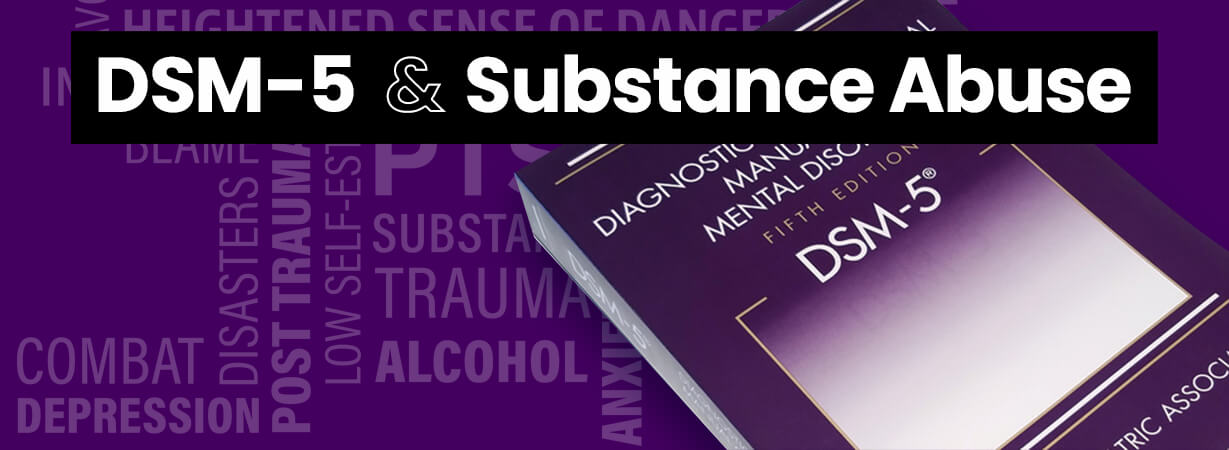DSM-5 and Substance Abuse
What is the DSM-5 and How Does it Relate to Substance Abuse?
The Diagnostic and Statistical Manual of Mental Disorders (DSM) is a guide for the classification of mental disorders, including substance abuse disorders, and is often referred to as the “Bible of psychiatry.” The DSM is a trusted resource for not only the medical community, but for pharmaceutical companies, researchers, the health insurance industry and U.S. courts of law.
The American Psychiatric Association (APA), which publishes the manual, printed the first edition of the DSM in 1952. It contained 130 pages and 106 mental disorders. With advances in medical science, a growing understanding of mental illnesses, the discovery of new disorders and more effective treatment options, the APA continues to update, revise and reissue the manual.
The most recent edition, the DSM-5 (Fifth Edition), published in May 2013 after thirteen years of development, has been both praised and criticized. As with each edition, there have been significant changes.

What has Changed Since the DSM-IV?
Revisions and additions to the manual are based on new research. They are meant to aid clinicians in better identification of symptoms associated with specific illnesses and being able to diagnose them. This can lead to improved treatment for those suffering from mental disorders.
While the number of disorders listed in the DSM-5 is approximately the same as in the DSM-IV, there have been some notable changes. Section III of the DSM-5 is entirely new. This portion of the manual is devoted to conditions that the APA feels merit more research before being recognized as official disorders.
A few of the new disorders added to the DSM-5 include:
- Disruptive mood disorder, binge eating disorder and hoarding disorder
- Bereavement, grief over the departure or loss of a loved one, is now classified as a depressive disorder.
- Asperger Syndrome, previously its own distinct classification, falls into the Autism spectrum, which is listed under neurological disorders.
- Schizophrenia is now a single diagnosis which no longer includes categories such as paranoid, catatonic, disorganized, residual or undifferentiated
Along with these changes, substance abuse and addictive disorders have been revised as well.
What’s New in the DSM-5 for Drug and Alcohol Dependence?
The Substance Related and Addictive Disorders chapter in the DSM-5 has combined substance abuse and substance dependence into a single disorder. This is a significant change as these were previously separate categories.
In the DSM-IV, substance abuse was seen as an early phase that could lead to dependence, though the symptoms of abuse in many cases were severe. The APA feels that a single diagnosis for substance abuse disorder will lead to less confusion in the medical community and will better fit the symptoms that patients experience.
Though substances will have separate titles, such as opioid use disorder and alcohol use disorder (alcohol dependence and abuse), they will be diagnosed using the same overall standards. Substance abuse disorder is measured on a scale from mild to severe, mild substance abuse disorder needing only two or three symptoms from a list of 11. “Problems with law enforcement” has been taken off the list of symptoms, while “an urge or craving to use a substance” has been added.
The DSM-5 also added the following to the Substance-Related and Addictive Disorders chapter:
- Gambling disorder
- Tobacco use disorder
- Criteria for caffeine and cannabis withdrawal
Because the DSM is the universal authority on psychiatric disorders, changes and additions to the manual are often criticized and debated.
DSM-5 Controversies
One of the largest and most reputable critics of the DSM-5 is the director of the National Institute of Mental Health (NIMH), Dr. Thomas Insel. In a public statement, posted on NIMH’s blog, Dr. Insel states that the failing of the DMS-5 is its lack of measurable laboratory results. According to Insel, symptom based diagnosis is not necessarily the best option in treating those suffering from mental disorders.
There are also those in the medical community that feel the psychiatric drug industry had too much influence in the DSM-5. The criticism revolves around the opinion that those suffering from normal problems, such as grief or forgetfulness in old age, will now be classified under clinically defined disorders. This, critics claim, will divert needed resources away from those with valid psychiatric disorders.
The APA stands behind the additions and changes made in the DSM-5. With contributions to the manual from hundreds of experts all over the globe, they feel the updates in this edition are based on the best scientific knowledge available today.
Have questions about DSM-5 and Substance Abuse Treatment?